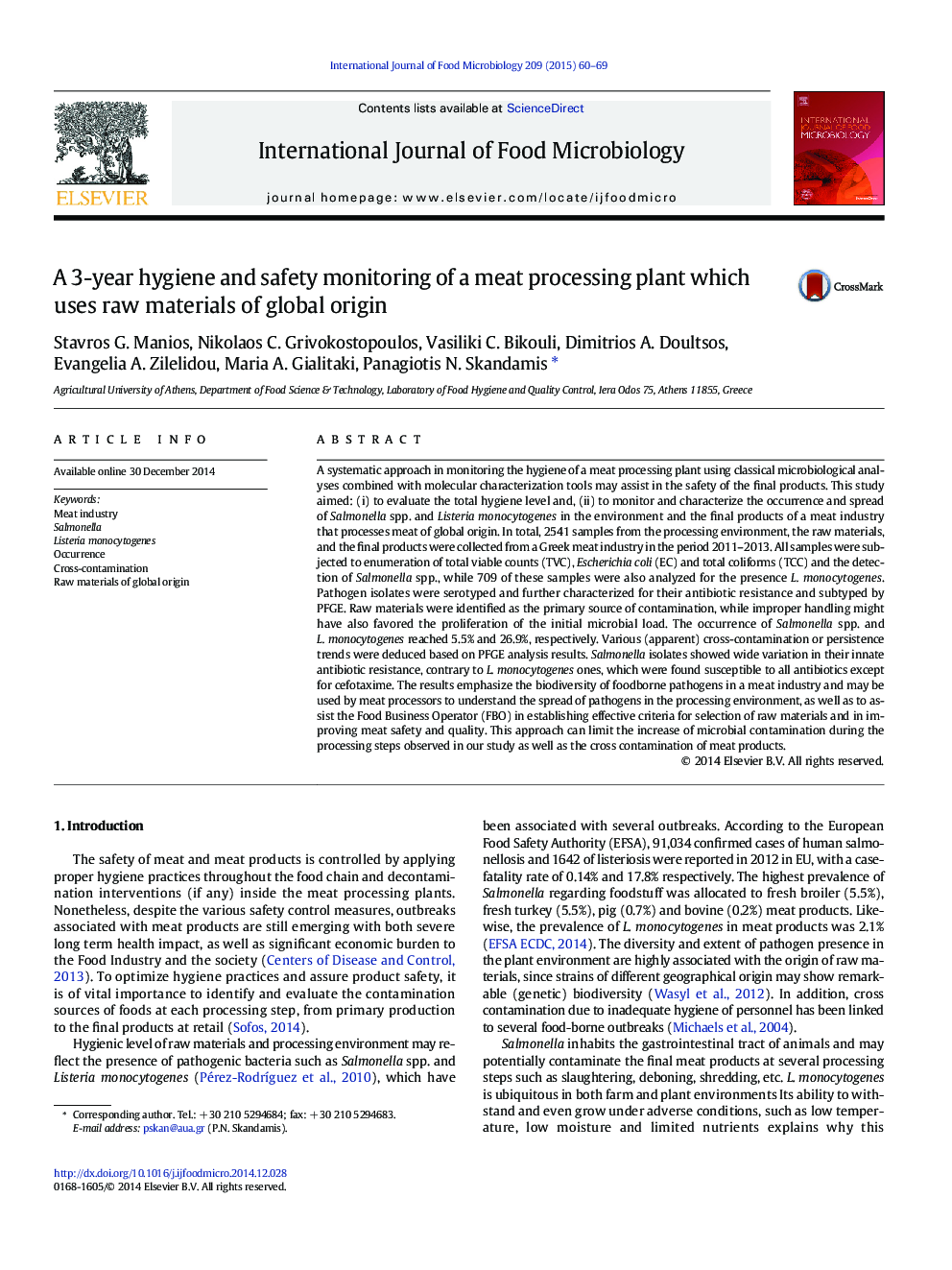| کد مقاله | کد نشریه | سال انتشار | مقاله انگلیسی | نسخه تمام متن |
|---|---|---|---|---|
| 4366552 | 1616574 | 2015 | 10 صفحه PDF | دانلود رایگان |
A systematic approach in monitoring the hygiene of a meat processing plant using classical microbiological analyses combined with molecular characterization tools may assist in the safety of the final products. This study aimed: (i) to evaluate the total hygiene level and, (ii) to monitor and characterize the occurrence and spread of Salmonella spp. and Listeria monocytogenes in the environment and the final products of a meat industry that processes meat of global origin. In total, 2541 samples from the processing environment, the raw materials, and the final products were collected from a Greek meat industry in the period 2011–2013. All samples were subjected to enumeration of total viable counts (TVC), Escherichia coli (EC) and total coliforms (TCC) and the detection of Salmonella spp., while 709 of these samples were also analyzed for the presence L. monocytogenes. Pathogen isolates were serotyped and further characterized for their antibiotic resistance and subtyped by PFGE. Raw materials were identified as the primary source of contamination, while improper handling might have also favored the proliferation of the initial microbial load. The occurrence of Salmonella spp. and L. monocytogenes reached 5.5% and 26.9%, respectively. Various (apparent) cross-contamination or persistence trends were deduced based on PFGE analysis results. Salmonella isolates showed wide variation in their innate antibiotic resistance, contrary to L. monocytogenes ones, which were found susceptible to all antibiotics except for cefotaxime. The results emphasize the biodiversity of foodborne pathogens in a meat industry and may be used by meat processors to understand the spread of pathogens in the processing environment, as well as to assist the Food Business Operator (FBO) in establishing effective criteria for selection of raw materials and in improving meat safety and quality. This approach can limit the increase of microbial contamination during the processing steps observed in our study as well as the cross contamination of meat products.
Journal: International Journal of Food Microbiology - Volume 209, 16 September 2015, Pages 60–69
